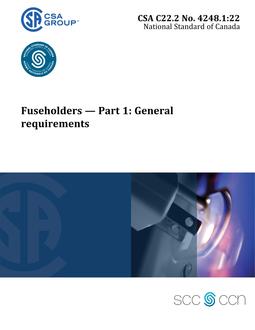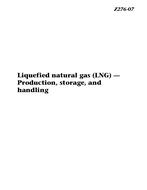Click here to purchase
Introduction
0.1 Background
CSA N286 identifies management system requirements for nuclear facilities including uranium mines and mills, uranium processing and fuel manufacturing facilities, high energy reactor facilities, research and isotope processing facilities, and radioactive waste management facilities. During the development of CSA N286, the authors considered other management system standards for health, safety, environment, security, economics and quality (see Annex A). CSA N286 integrates these requirements and enables users to develop an integrated management system if appropriate for the business.
The integration of management system requirements for health, safety, environment, security, economics and quality may help reduce or eliminate duplication of management system processes for identical or similar requirements. In consideration of CSA N286, Clause 4.3, where risks are considered during business planning, integration provides a more complete picture of the business and requirements, which provides an opportunity for improvement in terms of injury reduction, quality improvement, environmental management, dose reduction, economic viability, etc.
Top management is the highest ranking worker(s) responsible for a nuclear facility and should be explicitly identified by the business. CSA N286 emphasizes that top management is responsible for the implementation and continued improvement of a facility’s management system. This responsibility is important because a holistic approach to business management is vital, especially if the goal is to integrate management system requirements.
CSA N286 emphasizes top management’s role in the creation and maintenance of the business’s management system. By emphasizing the responsibility of top management, CSA N286 supports the holistic approach to business management and also aligns CSA N286 with other international standards on management systems.
Integration is not a requirement of CSA N286. The choice to integrate management system requirements is a decision made by each individual facility based on its business needs. Benefits of integration may include, but are not limited to
a) reducing duplication and thereby reducing risk of inconsistency;
b) enhancing safety;
c) combining and streamlining internal processes;
d) focusing all management systems on achieving the purpose and objectives (Clause 4.3);
e) reducing quantity of documentation;
f) covering all aspects of the business in a single management system review; and
g) leveraging best practices within the business including worker knowledge and experience.
It is important to note that CSA N286 has been developed to be read as a set of interrelated requirements. Additionally, the principles stated in Clause 4.1.2 of CSA N286 apply to each of the requirements in CSA N286.
0.2 The management system
The content of Clause 0.2 is new to CSA N286 and every business -regardless of size or facility type – should consider this information. This Clause describes the purpose of a management system and Figure 1 in the Clause presents a simplified model of a management system, which identifies and groups some key activities, concepts, and behaviours that provide input to or result in actions within a business.
Figure 1 of CSA N286 is meant to encourage a new approach to integration or harmonization of the requirements of management systems for health, safety, environment, security, economics, and quality, wherever practical. This new approach may help businesses understand integration and CSA N286 requirements at a higher level.
Although the success and sustainability of the management system depends on commitment from all levels and functions of the business, it is especially important for top management to be involved.
Top management:
a) provides a key role in directing and using the business to identify and integrate requirements (where it is decided by top management that this integration makes sense for the business);
b) commits the business to establish a management system that is understandable to the workers; and
c) ensures the management system is implemented and is continually improved.
These concepts are emphasized in the model.
The capability requirements that a business defines and implements may vary across facilities and may change over time. These capability requirements are influenced by the purpose, commitment and continual improvement requirements of the business.
Continual improvement of the management system is an important concept that improves organizational performance, which typically has an overall positive impact on business success and sustainability.
In the simplified model of a management system (Figure 1 of CSA N286), “Action” represents the processes necessary to execute the management system; action needs to be reflective of the purpose, commitment, capability and continual improvement of the business. These four processes can be integrated and the level of integration is best determined by the business.
The processes represented in the model have generic requirements (such as business planning, organization, resources, communication, continual improvement, etc.), which are outlined in Clause 4 of CSA N286. When used in conjunction with each other, Clause 0 and Clause 4 of CSA N286 may facilitate a business’s use and understanding of the key management system activities, concepts, and behaviours.
Scope:
CSA N286 recognizes that a facility might not have the internal capability or capacity to address all of its facility life cycle activity needs. Where a supplier is needed to fill a gap, the supplier is required to adhere to the CSA N286 requirements, but only in relation to the specific life cycle activities the supplier will be providing. Suppliers might not be required to address all the requirements within CSA N286, rather only those required for the scope of life cycle activities being performed. For example, a constructor’s management system needs to encompass those CSA N286 requirements related to activities they are performing.
The life cycle requirements for a nuclear facility can be substantial and the detail and scope of CSA N286 requirements that need to be met can be extensive. These requirements should be included in the documentation for supply chain procurement and should be understood by the supplier before a supply chain procurement contract is awarded.
It is not the intent of CSA N286 to require every supplier to have a management system that complies with CSA N286. Rather, the nuclear facility is responsible for identifying the specific N286 requirements that each supplier needs to comply with. A graded approach should be used to identify and document the rationale for the selection of these requirements. It is possible that the specified requirements may be satisfied by a supplier who has adopted and implemented other published management or quality assurance related standards.
When a CSA N286-compliant management system is specified by the nuclear facility, a supplier may use its own management system or work to or adopt the requirements and processes of the nuclear facility’s management system. In either case, the supplier needs to comply with the specified CSA N286 requirements.
Regardless of the strategy used by a supplier to meet the requirements, the nuclear facility’s top management is ultimately responsible for ensuring the requirements of CSA N286 are met.
Product Details
- Edition:
- 2nd
- Published:
- 06/01/2014
- ISBN(s):
- 9781771396097
- Number of Pages:
- 31
- File Size:
- 1 file , 820 KB
- Product Code(s):
- 2423151, 2423614, 2423151, 2423151


